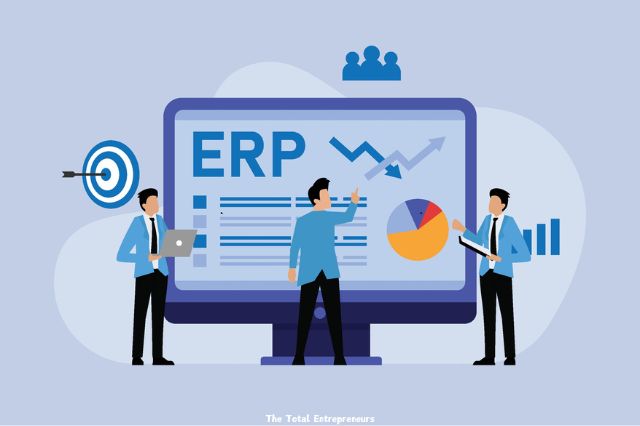Now Reading: Optimizing Business Operations with Enterprise Resource Planning Software
-
01
Optimizing Business Operations with Enterprise Resource Planning Software
Optimizing Business Operations with Enterprise Resource Planning Software

In today’s dynamic business environment, enterprises are composed of numerous interconnected business departments: Accounting, Procurement, Project Management, Human Resource, Compliance, etc. Tracking and managing effectively each department’s tasks pose significant challenges for management. Fortunately, enterprise resource planning (ERP) software offers companies a comprehensive way to manage all their operations and streamline their processes.
Understanding ERP Systems
Historically, business departments operated independently, often relying on paper records or distinct digital systems for communication and coordination. However, this fragmented approach frequently resulted in miscommunication. It also led to the creation of data silos, where essential information remained isolated within individual departments and teams.
Enter ERP. These systems are specifically designed to manage all aspects of a business’s operations. Companies can centralize their various functions onto a single, shared ERP platform, fostering greater efficiency and collaboration.
Moreover, the integrated nature of ERP systems facilitates the tracking of critical metrics: manufacturing costs, sales figures, customer feedback, etc. Businesses not only ensure that information is accessible across all departments, but receive valuable insights into their workflows.
So how does this all work? At its core, an ERP system consists of a unified data structure and database. This design ensures consistency in everything from terminology to definitions to user experiences throughout the organization.
Consider a company manufacturing plumbing pipes, for example. The ERP system ensures that specific products, such as a pipe made from a particular material and shape, are consistently labeled with the same name, serial number, cost, and specifications. Standardization like this and more minimizes the risk of miscommunication among teams regarding.
To fully leverage the capabilities of ERP software, dedicated enterprise PCs are essential. These systems offer the necessary processing power and security features to safeguard inventory management documents, customer orders, and sensitive business data.
The Evolution of ERP Solutions
ERP systems first arose in the 1960s. They have undergone significant evolution since then, with two notable advancements in recent years:
- Cloud-Based ERP Systems: Cloud-based ERPs are those hosted on remote servers instead of on-site. The setup frees companies and their IT departments from the burdens of maintenance and security of such complex and expensive systems. Cloud-based ERPs handle such responsibilities, usually through a subscription model, a feature that allows businesses to easily expand their operations by simply upgrading their service tier.
- Mobile Compatibility: Originally, ERP systems were designed for desktop computers. Now they have adapted to the increasing use of tablets and mobile devices in the workplace. This flexibility enhances operational efficiency, allowing, for instance, employees to update inventory records in real-time by utilizing the built-in barcode scanners on their tablets or smartphones. Sales teams out in the field can assess product inventories in real-time to give customers the best pricing and deals.
Key Benefits of Implementing an ERP System
Organizations that successfully implement an ERP solution can expect to experience numerous advantages:
- Increased Productivity: Workflow becomes more efficient thanks to improved internal reporting, enhanced customer service, and a more streamlined infrastructure.
- Simplified IT Management: IT teams reduce the number programs that need maintenance and updates by simply consolidating multiple systems like sales, inventory management, and accounting, into a single platform.
- Enhanced Communication: Consistent terminology makes collaboration and information sharing across teams far easier to use and manage.
- Scalability: As the companies grows , ERP systems can accommodate the additional transactions, users, data, and other changing business needs.
- Improved Security: Dedicated security measures minimize the risk of malware and unauthorized access from cyberattacks and other breaches.
- Optimized Inventory Management: Regular real-time updates prevent over- or under-stocking of inventory.
- Cost Savings: Enhanced inventory control, reduced IT expenditures, and faster project turnarounds can lead to significant long-term savings for businesses.
Supporting ERP Implementation with Dedicated Enterprise Computers
An effective ERP system can significantly enhance operations across all business functions, from accounting to logistics. However, successful implementation requires a robust hardware platform to support the software. Investing in specialized business computers can ensure optimal performance and security for your ERP solution, ultimately driving business success.



























:max_bytes(150000):strip_icc()/cashstasharticlejune13-19a9d774d6fb4ce094fda1c8796ecd7b.jpg?w=150&resize=150,150&ssl=1)


